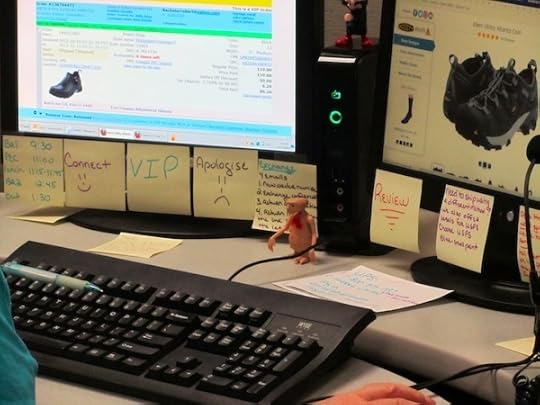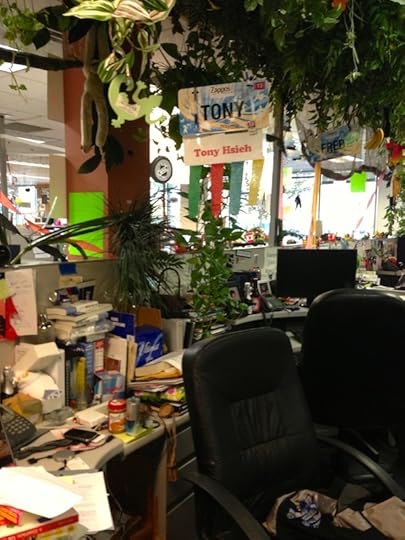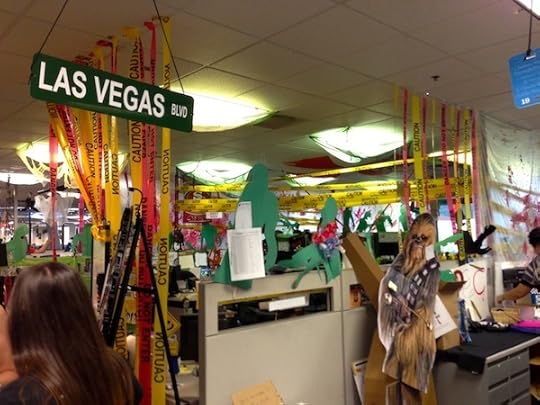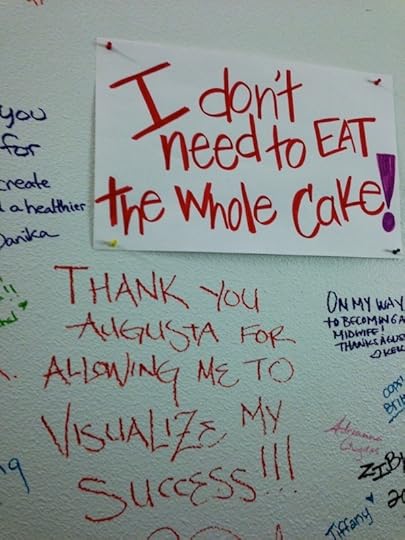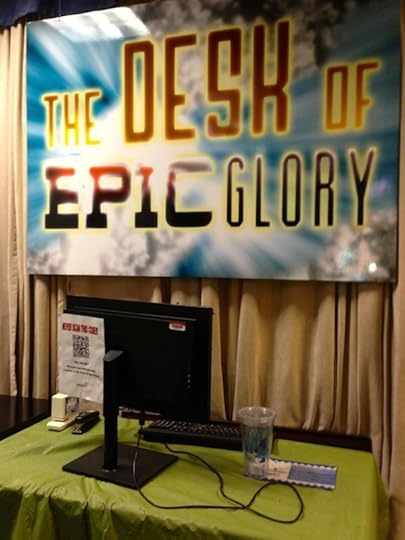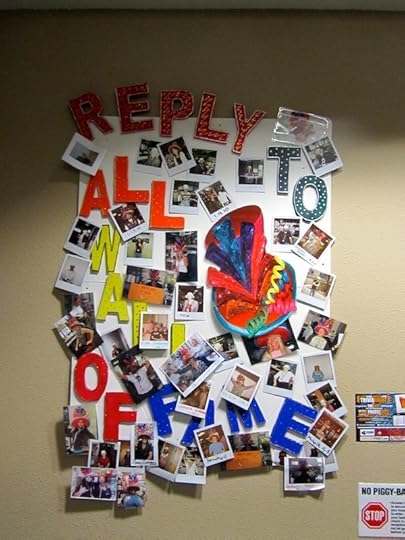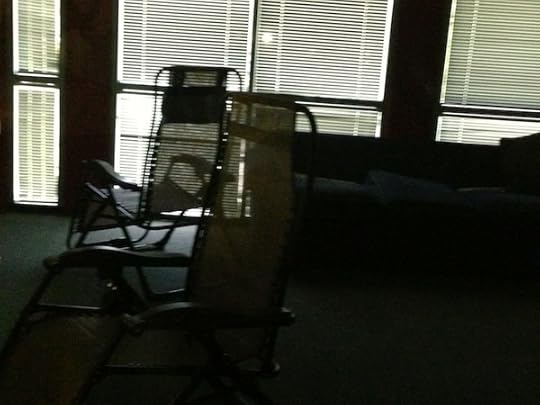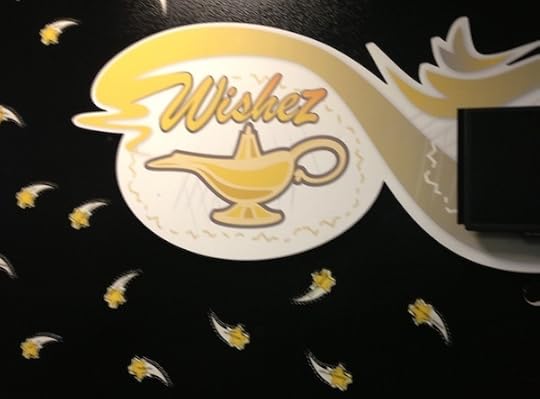Bryan Pearson's Blog, page 52
December 12, 2012
December 12: Loyalty Links & Likes
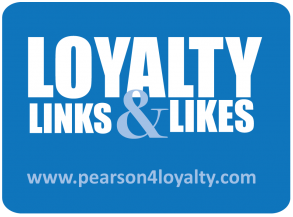 Here are a few loyalty links that caught my eye this week.
Here are a few loyalty links that caught my eye this week.
1. Drugstore loyalty cards: Four questions to ask — USA Today
All national drugstore chains now offer loyalty programs. This story shares insight into how to pick the program to best fit your needs.
2. ‘Loyalty’ dividends considered to reward long-term investing — Financial Post
A loyalty program for shareholders? Researchers to study the effects of using incentives to encourage investors.
3. Kellogg, Verizon use Gamification to Build Loyalty — Chief Marketer
The story explores ways brands can engage shoppers, benefit the bottom line and build loyalty.
4. Unfolding the Mobile Wallet — COLLOQUY
COLLOQUY Senior Editor Phaedra Hise explores the concept of keeping your money where your mobile is. Hise reveals how loyalty marketers can capitalize on the new payment methods.
5. KULA Causes: Your Rewards Points, Miles Equal Cash Charity Donations — Huffington Post
Using your loyalty rewards in a more rewarding way. This story discusses using loyalty “currency” to benefit charities.
December 10, 2012
Catalina Island A Sunny Temptation of Loyalty’s Awards
 No industry is an island, and that goes for tourism, too. So when Catalina Island Vacation Rentals in California opted to launch a loyalty plan, it did so with its surrounding businesses in mind.
No industry is an island, and that goes for tourism, too. So when Catalina Island Vacation Rentals in California opted to launch a loyalty plan, it did so with its surrounding businesses in mind.
Guests become members of the CIVR Loyalty Program after their fourth stay – an important trigger because 32 percent of its guests are repeat vacationers, according to the company. In return, guests receive discounts at participating island businesses, including restaurants, shops, spas, bicycle rentals, golf cart/club rentals, diving supplies, boat charters and more.
The program is designed to encourage CIVR’s best customers to become the entire island’s best customers. And that translates to a lot of good will, particularly among the smaller, family-owned businesses that benefit from the program. It is worth saying that CIVR is a decent-sized entity: The rentals include roughly 200 private homes on the Southern California island.
I read about the program through the CIVR website. It sounds like a great community endeavor. But to operate like a true loyalty plan, it needs to offer the consumer benefits beyond discounts in return for sharing their information – it should deliver experiences or offers that reflect his or her actual preferences and spending patterns.
For instance, if the consumer shows his loyalty card at the local snorkel shop, is the information stored so that on his next visit, he can be given preferential booking? If she uses her card for a discount on golf, will a free golf consultation be awaiting her on her next visit? Because it should – that is what consumers have come to expect from loyalty.
I think Catalina Island Vacation Rentals is taking a generous and thoughtful step in the right direction, for itself and its fellow businesses. But sustaining loyalty – regardless of program – requires more than passively collecting consumer transactions. It takes acting on them in a way that is relevant.
Ah, but I wonder if I really know enough about it? As I review the CIVR website, the sandy beaches, the sunset views, I feel that this program may require a little more research. And I do believe I have enough frequent flier miles to visit Catalina Island.
It is my obligation, after all.
December 5, 2012
December 5: Loyalty Links & Likes
 Here are a few loyalty links that caught my eye this week.
Here are a few loyalty links that caught my eye this week.
1. Shred the Punchcards: Belly Updates Customer Loyalty Programs — TIME
Belly has been getting a lot of attention. Find out why the loyalty program has more than 600,000 users.
2. The Best Way to Win Repeat Customers — Entrepreneur
Social media guru Gary Vaynerchuk talks about the importance of getting to know the customer – not just what they buy – in order to win loyalty.
3. Kroger’s 3Q a glimpse at customer loyalty push — CBSNews
The grocery store loyalty war is brought front and center in this story discussing what Kroger plans to do to keep customers.
4. Office Depot Customer Service: Competition Is Right Next Door — CustomersThatStick
It’s always nice to hear about exceptional customer service, especially when it comes from a loyal customer.
5. Why Businesses Should Use Social Media For Customer Service — Forbes
Social media ROI is one reason brands should go social, learn about some of the other ones including Zappos unique approach to social here.
December 3, 2012
Facebook Throws the Vote, But Will Consumers Care?
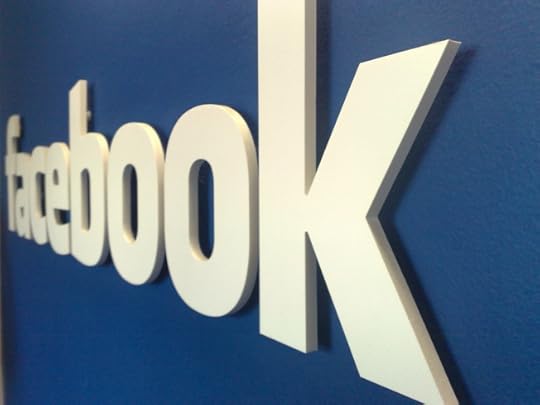 Two weeks after the United States held its national elections, Facebook proposed taking away its own users’ right to vote. Whether this turns out to be socially acceptable, we’ll find out in time.
Two weeks after the United States held its national elections, Facebook proposed taking away its own users’ right to vote. Whether this turns out to be socially acceptable, we’ll find out in time.
Facebook on Nov. 21 – Thanksgiving Eve – sent emails suggesting it would scrap a practice in which users were given the opportunity to vote on policy changes. Under that practice, Facebook put up to vote any proposed policy change that more than 7,000 users commented on. If more than 30 percent of active users then voted, the outcome would be binding.
The change, Facebook explained, is due to the size of membership. With 1 billion users, getting 7,000 comments is a snap. But 300 million votes (30 percent of 1 billion)? That is a not so simple.
Instead, Facebook suggests a system during which members provide feedback during a seven-day window. Users also may have the chance to send questions to its chief privacy officer, Erin Egan. “We’re proposing to end the voting component of the process in favor of a system that leads to more meaningful feedback and engagement,” the company said.
But along with the suggested vote change is another proposal that would allow Facebook to start sharing user data with its existing or future affiliates (like Instagram), according to its Data Use Policy. Combined, these two suggestions have privacy groups protesting.
I am not sure how many Facebook users even know they have a vote, but more than 7,000 users had commented, and so the proposed change is now up for vote.
Balloting will conclude the first week of December, but the outcome might not matter as much as the message. Consumers are smart, they know their personal information is beneficial to companies and expect an experience of equal value in return. In fact, in our recent survey of U.S. and Canadian consumers, 78 percent said they believe their data is an asset to companies.
I like Facebook; I use it both recreationally and professionally and find it a great tool on both fronts. And one of the reasons I’ve always liked it is because Facebook’s users have a voice in the community. But now as a public company and in the midst of questions about consumer data usage, there are additional voices that need to be heard. Whether the shareholder voice is playing a greater role only Facebook knows, but it is their voice that really needs to be heard.
I’d suggest that Facebook make sure its own view is understood – clear as a bell. It has an opportunity to demonstrate its intentions regarding what it collects and understands about its users, and how it plans to use that information to create new value for its users. Facebook has been criticized before for not fully sharing how it used its members’ information. At some point, people have a limit on what they will tolerate, and new rivals for their time and attention are emerging daily.
Facebook has the opportunity to clearly show its users why their involvement is mutually beneficial to them – because by sharing their information, users do play a critical role in Facebook’s ability to deliver relevance. Without it, Facebook’s efforts to create an engaging platform may not be effective in the long run.
November 28, 2012
November 28: Loyalty Links & Likes
 Here are a few loyalty links that caught my eye this week.
Here are a few loyalty links that caught my eye this week.
1. Sears President: We’re Making Improvement in Customer Experience — Fox Business
This video link features President of Sears, Ronald Boire. Mr. Boire discusses how the company plans to focus on improving customer experience in the hopes of boosting sales.
2. Banks see information-driven services as a way to improve loyalty — InformationAge
No surprise here — using customer data can enhance overall loyalty. This story applies that concept to the banking industry.
3. ‘Tis the season to repay customer loyalty — Business Review
In my opinion ’tis always the season to repay customer loyalty. The story cites a survey underscoring the importance of customer experience during the holidays.
4. Loyalty programs or bust — Chicago Tribune
How to rack up frequent-flyer miles without taking a flight. That and more in Gregory Karp’s Spending Smart loyalty feature.
5. Spy Mannequins May Collect Your Data This Christmas — redOrbit
I’m sharing this link because it raises the privacy concerns we explored in the 2012 LoyaltyOne Privacy Study.
November 26, 2012
12 Months of Loyalty – One Blog’s Analysis
 One year ago this month, I launched this blog with a little trepidation and a few heartfelt words about customer intimacy, privacy and how much the industry has changed over the past two decades.
One year ago this month, I launched this blog with a little trepidation and a few heartfelt words about customer intimacy, privacy and how much the industry has changed over the past two decades.
Now as I look back, I am impressed by how much change occurred in just the past 12 months.
In 2012, the term “showrooming” became a household word; an app called “Pay with Square” enabled small-business merchants to identify shoppers as soon as they walked in the door; Microsoft filed patents for tracking systems that could detect a computer user’s emotions; and Facebook went public, largely on the power of its users’ data.
Meanwhile my book, The Loyalty Leap, published and LoyaltyOne expanded deeper into the booming international markets of India and Brazil.
All of these events reinforce what I said one year ago: That while the power of customer data is much greater today, achieving customer intimacy can still be an uphill battle. Companies find themselves with loads of data, but are not clear of how to use it in a way that benefits both them and their customers.
It takes a leap of faith in the data, and it takes a leap in how you operate your company, from one that may be focused on products or services to one that puts the customer at the heart of its purposes.
As I look back on more than 100 blog posts, I know the industry is getting there. I’d like to show you how. Below I have listed what I feel are the blog items that reflect the industry’s most marked accomplishments and innovations.
Let’s hope next year at this time, we have even more to share.
The Three Rs of Loyalty: A Life Lesson from the Classroom to the Boardroom
Intimacy in the Aisles: How to Distinguish the Customer Experience
Social relevance as more than a pet project
Guide to Good Manners Online: It’s Transparent
Measuring True Loyalty in the True North
Wanted: Data Processors; Responsibility Required
Loyalty in any language means loyalty
We All Have a Price, As Long as It is a Fair One
Coalition Loyalty: What the Rest of the World Knows
November 21, 2012
November 21: Loyalty Links & Likes
 Here are a few loyalty links that caught my eye this week.
Here are a few loyalty links that caught my eye this week.
1. How to Add Personality to Your Loyalty Program — Entrepreneur
FoBoGro’s name alone hints at its preference for out-of-the-box rewards programs. Check out some of its experiential rewards in this link.
2. Best Buy CEO Eyes Cost Cuts, Online Sales — The Wall Street Journal
The recently appointed Best Buy CEO talks about his plan to use customer service and loyalty to right the ship.
3. Customer loyalty at the phone tip — Marketing
With today’s technology there are more outlets to building brand loyalty. This article looks at these outlets through a marketing lens.
4. Quickly Growing Loyalty Service Belly Launches In San Francisco — Forbes
This loyalty services startup is far from going belly-up. Read about Belly’s loyalty offerings and growth here.
5. Know thy customer in time for the holidays — boston.com
The story reveals shoppers’ preferred payment method during the holidays and discusses the benefits of payments data.
November 19, 2012
What Mayberry Taught Me About Loyalty
Remember the corner store? The place where you’d go for a yard of twine and the owner would ask about your oldest child, or tell you that you’re favorite flavor of licorice just came in?
Today, it is nearly impossible for retailers to provide that level of service without the use of data. But thinking back to the corner store, I do remember one television program that really provided all the lessons I needed to know about building customer loyalty. They are, in fact, embodied in its characters – Andy, Opie, Aunt Bee.
You guessed it, the Andy Griffith Show. But before you change the channel, let me make my case and explain how each character serves as a guide to engaging today’s increasingly fragmented consumer base:
Floyd: Slow going and a little absent minded, Floyd is the hopeful but distracted romantic in us. Like Floyd, we dream of attaining certain achievement, goals, or status, but need to be ignited with some encouraging, relevant messaging.
Barney: Frenetic and a little self-delusional, Barney represents our tendency to spend first and ask questions later. For some marketers, this is great. But think about it – do you really want a population of customers who purchase on a whim or through price promotions?
Helen: The woman’s voice. Helen represents not only the female consumer, but also the female voice of reason in all of us. Helen tells us what is right and what makes sense. Listen to her, because your customers – even the Barney’s out there – eventually will.
Opie: The youngest character of the program symbolizes our innocence and aspirations. For the Opie in us, anything is possible. Marketers can make this so through specialized rewards that deliver more than mere points and miles, to include memorable experiences.
Aunt Bee: The nurturer. She lets us know we are special, that we make a difference. For marketers, this is called recognition – never, ever letting your best customers forget that your company revolves around them, not the other way around.
Andy: It goes without saying; Andy is who we all want to be. He’s the hero with some sage advice, a level head and the ability to disarm an unhappy customer with nothing more than a few words. Andy embodies the best of all characters.
Our job, as marketers, is to be the Andy to every customer.
Yes, I missed some characters, because even the best marketers occasionally overlook potentially important customers segments. Who is it for you? I look forward to your characterizations.
November 14, 2012
November 14: Loyalty Links & Likes
 Here are a few loyalty links that caught my eye this week.
Here are a few loyalty links that caught my eye this week.
1. Could charity loyalty cards replace ‘chugging’? — Marketing Week
I visited this link for the ‘chugging’ and stayed for the insight about implementing loyalty cards for charities and donors.
2. Three ways to build customer loyalty — Franchising
A simple thank you goes a long way in building loyalty. Read about that and more in this story that offers more advice to creating a loyal customer base.
3. Boosting Holiday Profits With The Gift Of Customer Service — Fast Company
With the holidays around the corner I thought this a timely story that targets customer service employees.
4. The mathematics of customer loyalty: A customer saved is 1.2 customer earned — Financial Post
The author shares numbers behind building loyalty and offers four takeaways.
5. Belly App Converts ‘Damn Paper Punchcards’ to Digital — Entrepreneur
This interview with a rewards start-up delves into the digital aspect of loyalty programs.
November 12, 2012
Delivering Loyalty: 10 Ways Zappos.com Creates Happy Employees
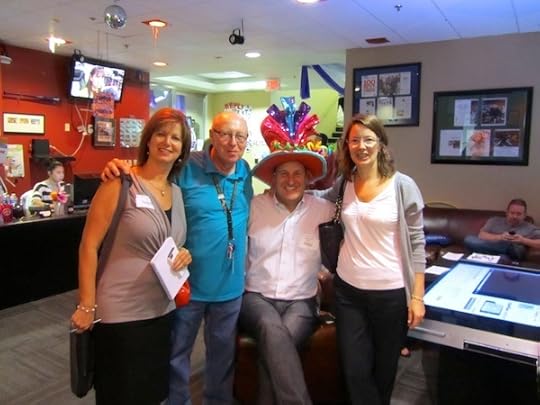 Getting a job at Zappos.com today is more than a dream for many; it is a one in a 100-person opportunity.
Getting a job at Zappos.com today is more than a dream for many; it is a one in a 100-person opportunity.
Those are basically the odds of landing a position at what is one of the most popular retailers today. Last year, Zappos’ took 25,000 applications for 250 job openings. This year it expects to take 30,000 applications for 300 openings.
Such numbers are the result of a simple but pure philosophy, of founder Tony Hsieh, to create a company he not only is happy to come to every day, but that he loves. This is why Zappos made Fortune Magazine’s list of Best Places to Work in 2009, 2010, 2011 and 2012.
On a recent trip to Las Vegas, I was able to tour the Zappos’ headquarters and call center. Among the many things I learned, I saw that at Zappos, customer intimacy begins with employee loyalty. So while last week I listed the 10 Loyalty Lessons I picked up at Zappos, today I will follow up with the 10 ways Zappos engages its 1,400 employees – 650 of whom work in its call center.
1: Extensive training
Every Zappos employee, regardless of department, goes through four weeks of on-board training across various departments, including the call center. And because each Zappos employee is trained on the phones, the company does not need to bring in extra labor during peak holiday periods. Instead, all employees voluntarily take customer calls for 10 hours.
2: The offer
Tony Hsieh wants all of his workers to be a good fit. So in the third week of training, each trainee gets “the offer” to leave Zappos (the offer varies from a few hundred to a thousand dollars). If the employee does not feel Zappos is a good fit, he or she can take the money and leave, no hard feelings, no questions asked.
3: Let your hair down
For creative employees, Zappos encourages personal expression in many ways. Workstations are marked with overhead license plates that carry the worker’s name and hire date. Employees decorate the conference rooms, and they take frustrations out on Bob, the mannequin punching bag. Where’s the boss? Hsieh’s desk is on Monkey Row, covered in jungle vines.
4: Good eats
No one goes hungry at Zappos. Lunches are served free every day, including drinks, sandwiches, soups and salads (a hot lunch will cost $3). Need a snack? Cookies, candy bars and ice cream also are free and plentiful, almost like a convenience store with its doors wide open. The one discretionary item employees have to pay for is Red Bull.
5: A life coach
Inside Zappos, life and work mesh together, so the company employs a full-time life coach to consult workers on business and personal issues. Classes of 20 participate in goal-setting programs, and upon graduation they write their achieved goals in a special hall of fame. The success rate is 98.2 percent.
6: Recognition
Zappos has a Desk of Epic Glory – need we say more? In addition to this desk for outstanding employees, the company provides a throne for life coach graduates, and a monthly company parade to honor employee “Heroes.” For those who prefer tangible recognition, there’s the Zollar Store, where employees redeem Zollars earned through goal achievement.
7: Trust
One of the few goals at Zappos call center is to answer 80 percent of calls within 20 seconds. After that, the clock is off. The company trusts its employees to spend as much time as necessary to achieve the best outcome. Call times and productivity are tracked, but there are no requirements, which can mean some long call times – the longest was 8.5 hours.
8: Empowerment
Every employee at Zappos’ is provided the tools and mentorship to become a senior leader in five to seven years. But it is up to them to get there. Workers are free to make career-defining customer decisions, even it that choice is to send free shoes or make personal greeting cards.
9: Well-being and Balance
At Zappos, employees are almost required to feel good, whether that means catching 40 winks in the nap room or getting work done while sitting on an exercise ball. All workstations are ergonomically designed for employees – regardless of if they stand, perch on a ball or sit on the floor. Zappos also is experimenting with a work-at-home program.
10: The Culture
Culture is the big attraction, and Zappos works hard to foster it. A group of volunteers, called the Culture Club, actually develops cost-free ideas to improve the company culture. The Wishez Wall, for instance, encourages employees to post wishes (a math tutor, a sewing table) and others fulfill them. Each year, these activities are commemorated in an annual Culture Book.
Bryan Pearson's Blog
- Bryan Pearson's profile
- 4 followers








